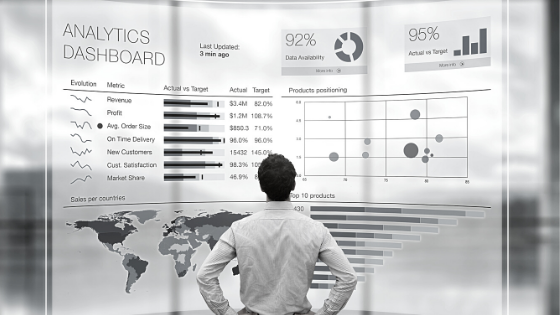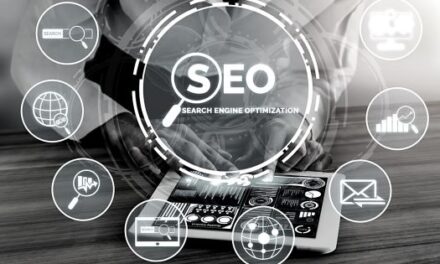There’s a difference between predictive modelling and predictive analytics. Predictive modelling is the process of using algorithms to make predictions based on historical data. Predictive analytics is the process of using predictive models to solve business problems. Predictive models are designed based on the results of past data analysis. So, predictive analytics involves data analysis as well as model development and deployment.

What does the predictive model mean?
Predictive modelling is a process used in business analytics to predict the probability that an event will occur by analysing historical data. This could help you understand the potential future outcomes of something like a customer buying, a candidate being hired, a sales team meeting a target. Predictive modelling is often used to help build better business decisions.
Predictive modelling is a subset of predictive analytics. Predictive analytics uses predictive models to solve business problems. It is typically used in areas like sales forecasting, customer churn, customer retention, pricing, demand forecasting, and inventory management.
What are the two types of predictive modelling?
You can find various types of predictive modelling techniques including logistic regression, linear regression, ridge regression, neural networks, time series, and decision trees.
What is predictive behaviour modelling?
Predictive Behaviour Modelling: Analysing how people behave over time and how that information can be used to predict future consumer behaviour. This can be used to help predict and manage customer purchase behaviours, for example, what products/services will be most profitable or most popular.
It can also be used to understand how well certain brands, products, or services are performing, which can be used to help make strategic decisions and better target marketing or advertising campaigns. To build a predictive model, data usually must be collected for a long time period.
Why Predictive Modelling is Important for Data Science?
Predictive modelling is important because it can be used to make better business decisions. For example, a company can build a predictive model that predicts how much a consumer will spend on a product or service. Such a model can then be used to understand how much a customer should be charged for a product or service, or make decisions about which products or services to offer.
Another example would be predicting whether or not a consumer will purchase a particular product in the future.
The process of developing and testing a predictive model can be done in the following stages: data collection, data visualization, model development, model testing, and model deployment. The results of this process should be tested against a set of rules that define what the model should do in a given situation.
However, this stage is also where the predictive model needs to be carefully tested to ensure that it provides accurate predictions. The model should be able to successfully predict the outcome of future conditions, and it should be able to detect situations where the model is producing unreliable predictions.
Predictive modelling is important for data science as it allows data scientists to understand the information from the past and identify patterns to gain insight into the future. Since they only have limited resources to collect data, being able to predict the future through data analysis is a very important strategy. To make sure they are able to do this, they must have data collected over a long period. This is where predictive modelling services come into play.
What are Predictive Statistics?
Predictive modelling is simply a method for transforming raw data into a form that can be used for prediction. It is a statistical method that helps us to predict the future based on the past. It is not a magical tool that can predict anything, but it does make it possible to make predictions and to compare the predictions. It is a way of making sense of data and improving our ability to make decisions based on them.
Predictive modelling techniques in data mining
The techniques used in predictive modelling include Regression Analysis, Probability, Regression Analysis, Decision Trees, Regression Analysis, Multivariable Regression Analysis, Logistic Regression, Regression Analysis, Regression Analysis, Classification, Regression Analysis, Multiple Linear Regression Analysis, and Statistical Learning Theory.
Predictive Modelling Benefits
Predictive modelling also referred to as predictive analytics, takes existing data and analyses it to determine future trends. The goal of predictive analytics is to help companies make better business decisions. The decision-makers use the predictions to determine what action should be taken. Predictive analytics is based on the premise that if you know the future, you can take steps to ensure that your business meets its goals.
Top Applications of Predictive Analytics
It can be used in various applications, below mentioned are the two examples:
1. Collection Analytics
It optimizes the allocation of resources by identifying the following facts:
• Fruitful collection agencies
• Contract strategies
• Valid actions enhance recovery
• Decrease in collection costs
2. Customer Relationship Management
It is applied to customer data to attain CRM objectives such as marketing campaigns, sales, and customer service. Companies need to analyse products in demand and identity major issues leading to loss of customers. For this, need to apply analytical CRM to the whole customer lifecycle.
Predictive analytics is mainly used in fraud detection, collection analytics, and project risk management.
Predictive Modelling Features
- Data Analysis and Control
Extract useful, and important data using data analytics tools. Simultaneously, you can create fresh data, modify or merge data or apply a filter on the data to forecast the results.
- Visualization
You can find numerous tools to create reports in interactive graphics format.
- Statistics
With the help of the statistics tool, you can figure out the relation between the variables in the data, and confirm the prediction.
Predictive modelling is widely used in healthcare, auto insurance, and archaeology.
Predictive analytics is used to solve various problems as they are used to find out short-to-medium term trends. Some examples include:
- Profitability
- Demand planning
- Sales trends including specific products, and lines
- Maintenance requirements
- Hence, it is said that predictive analytics focuses mainly on a narrow set of factors, as highlighted in the above example i.e., short-term risk analysis. Hence, it is based on a hypothesis using pre-decided scenarios with limited options.




















